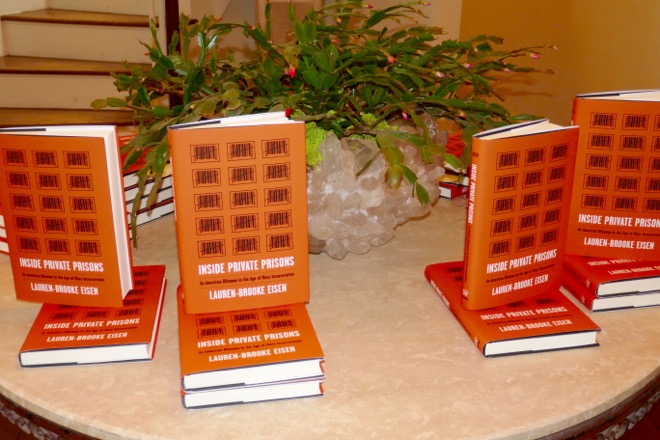A Look Inside Private Prisons with Lauren-Brooke Eisen

Jackie Pletcher and Charlie Eisen welcomed guests into their Georgetown home Sunday to celebrate Lauren-Brooke Eisen’s new book, Inside Private Prisons: An American Dilemma in the Age of Mass Incarceration. Her study examines the relationship between profit and incarceration in America.

Introducing the senior counsel at The Brennan Center for Justice, a non-partisan public policy and law institute, Charlie Eisen proudly explained that his daughter also researched the book while raising two small children, “Like Ginger Rodgers, she did it all backwards and in high heels.”
Guest enjoyed champagne cocktails and a scrumptious brunch as Eisen gave a brief history of correctional facilities, starting with the “tough-on-crime” 1980s (specifically mass incarcerations for crack cocaine use), followed by the rise of for-profit prisons, turning us into “the world’s biggest jailor.”

The trend to privatize stemmed from growing costs of imprisonment and a desire to reduce the size and scope of the federal government.

The creation of rural prison towns and the housing of immigrant detainees helped create an $80 billion dollar prison industrial complex.

Today more than 100,000 Americans and half of all immigrant detainees are held in private prisons. With $4 billion dollars in annual revenue, financial incentives play a huge role in their proliferation.

In her book, Eisen examines the complex issues of an industry where filling beds and lengthening prison stays gets more attention than reducing a long-standing 75% recidivism rate.
She writes, “The nation is warehousing so many of its parents behind bars that just a few years ago Sesame Street introduced Alex, a muppet whose father is in prison.”
Through interviews with inmates, families, correctional staff and policy makers, the author takes a look at all sides with the objective of improving the outcome for those incarcerated.
*/
Recognizing that private prisons are here to stay, the author recommends “a good first step would be to structure contracts around reorienting incentives, something that we might call performance-based contracting” that improve prison conditions, and create training programs for successful reentry.

*/
*/
